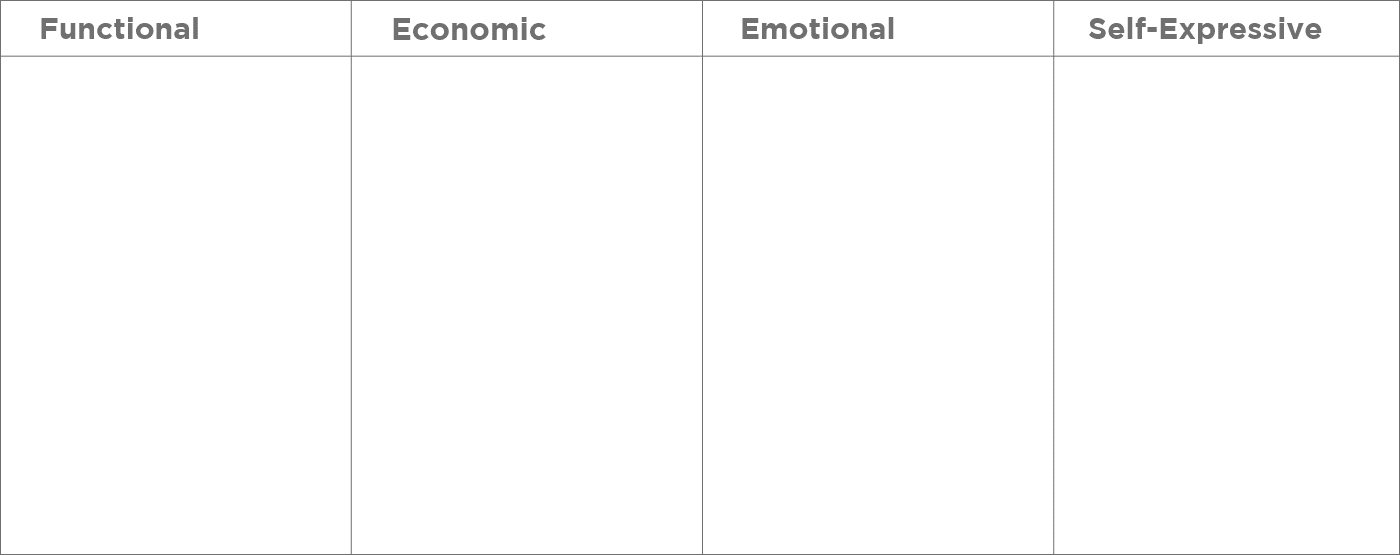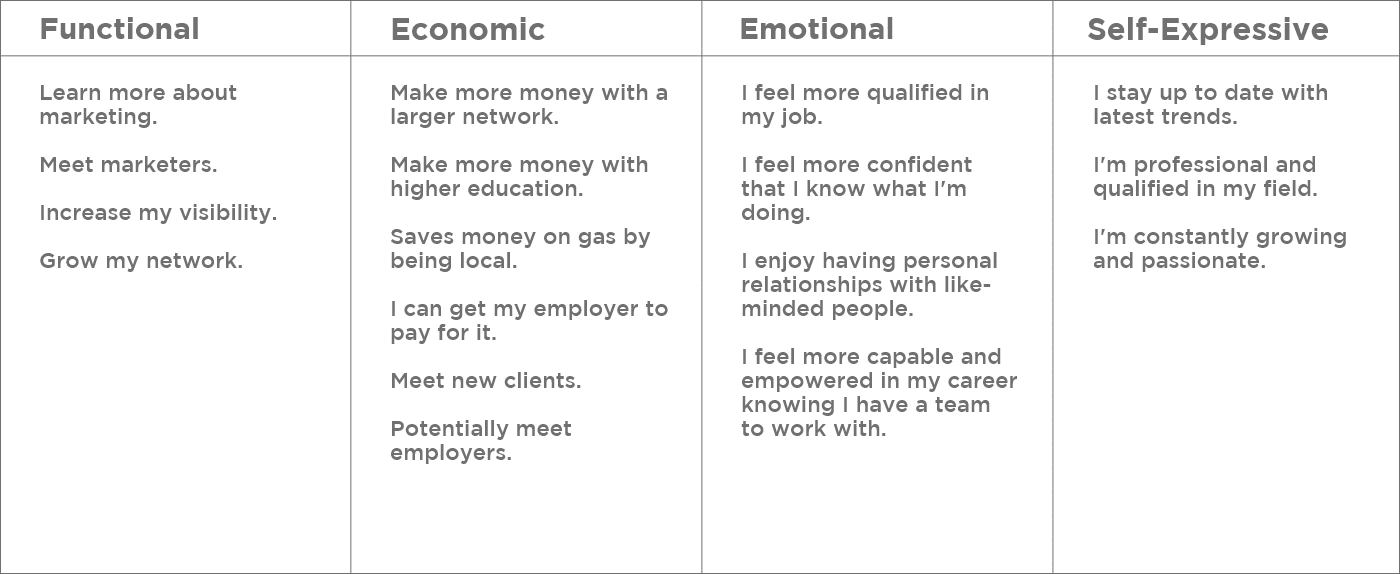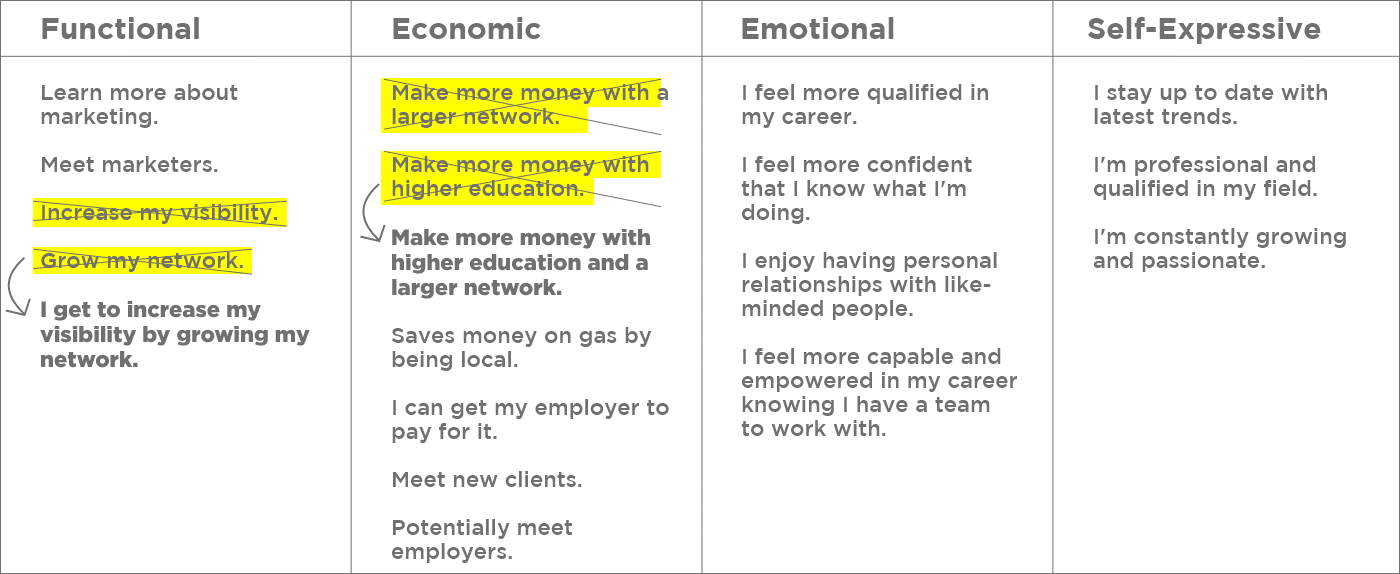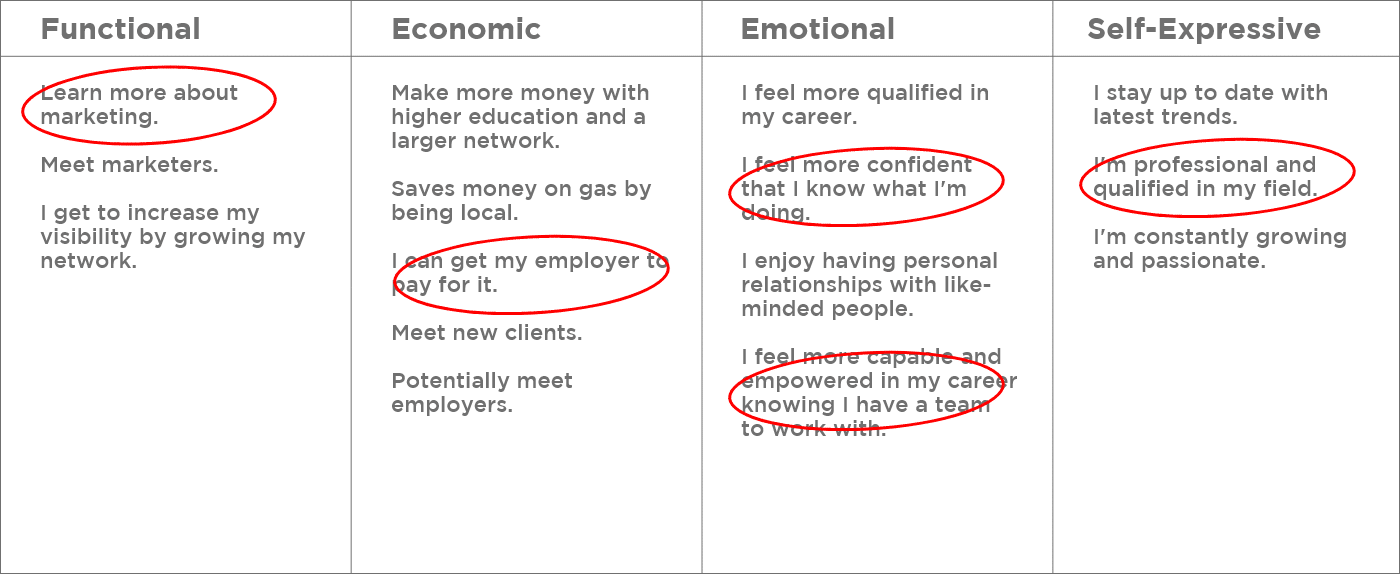Marketing in UX
Capturing Brand Drivers
Brand Drivers
To start off with our user research, let’s talk about Brand Drivers, what they are, and why this is the ideal starting point for understanding your customer. For our purposes, we’re defining a brand driver as a specific benefit a customer receives from using your product. Those benefits “drive” and attract users to your brand. Once we fully understand all the potential benefits the product can provide, we can narrow down exactly which provide the most value and feel the most important to our customers. Let’s start off by drawing a table on the board with four columns and the following headings: Functional, Economic, Emotional, and Self-Expressive.Let’s define each of the column headings.
Functional benefit – The purpose and result of the product. A functional benefit of a car is it allows one to get from point a to point b.
Economic benefit – How it benefits the user financially. A financial benefit of a car might be that it saves them more money by not having to spend as much on gas.
Emotional benefit – How it affects them emotionally. An emotional benefit of a car might be that it makes them feel powerful and secure.
Self-Expressive – What they’re emoting to the world about themselves. A self-expressive benefit of buying a car might be that it expresses to the world they’re prestigious and have high status.
In each column, start listing all the potential benefits for each category. This process is ideally done with 3-5 people with one person acting as moderator for the group. If you are the moderator, it’s important to write down relatively specific benefits while staying away with generics.
For example—continuing our car analogy—it might be suggested that a functional benefit of a car is that it gives the user the ability to drive. While accurate, it fails to empathize with your potential customers and understand their core needs. In this case, the moderator should ask, “Why is that important?” to which the person might respond, “So they can get to and from work.” The benefit of ‘getting to and from work’ is a much more valuable to the customer than simply driving and gives us a better understanding of the problems the user is attempting to resolve.
Focus on quantity over quality. Bad ideas will be ruled out in a later step. For now, it’s more important that all ideas be considered—particularly if mentioning them sparks conversation.
Here’s one I made for PMG, a marketing group that hosts educational lectures and mixers.
Now that we have as many benefits as possible written down, go through each column and remove any redundancy. Benefits that are similar and have related motivations can be combined into one item. Don’t, however, combine benefits between columns.
For the final step, narrow down which benefits you believe provide the most value to the customer. Marketing theory suggests your brand is strongest when it’s able to focus a single core message. At this point, it’s important to determine which of these are most valuable and which should be considered not important enough to advertise.
In the example above, we’ve selected five core brand drivers. While there isn’t a science to exactly how many should be circled, many suggest focusing on the single driver that your customers perceive as the most valuable. I suggest trying to stick to between one and five. More than that and your messaging risks becoming muddied and diluted.
For more about the brand driver process, check out the course Brand Foundations on LinkedIn Learning (formerly Lynda.com).




